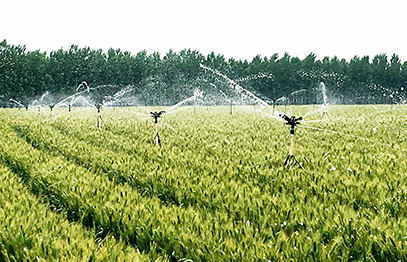Aug . 13, 2024 16:19 Back to list
Exploring the Benefits and Applications of Single Phase Submersible Pumps in Various Industries
Understanding Single Phase Submersible Pumps
Single phase submersible pumps are essential devices widely used in various applications, including agriculture, construction, and residential water supply systems. These pumps are designed to operate efficiently when submerged underwater, allowing them to draw water from deep wells or other sources to the surface. Their unique design and operational features make them an ideal choice for specific tasks, especially in situations where electricity supply may be limited to a single phase.
What is a Single Phase Submersible Pump?
A single phase submersible pump consists of a sealed motor and a pump component, both housed in a robust casing that allows them to function efficiently underwater. The term single phase refers to the type of electrical supply that powers the pump, which is commonly used in household and light industrial applications. These pumps typically operate on 120V or 240V AC power, making them more accessible for residential use compared to three-phase systems, which require more complex electrical setups.
These pumps are engineered to push water to the surface, utilizing a specially designed impeller that creates a flow of water through the pump and up to the discharge outlet. The submersible design helps to prevent cavitation—a phenomenon where vapor bubbles form and collapse in a liquid, causing damage to the pump.
Key Advantages of Single Phase Submersible Pumps
1. Efficiency Single phase submersible pumps are designed with energy efficiency in mind. Their submerged operation reduces the chances of cavitation and allows them to work effectively in pumping water from deep sources, significantly lowering electricity consumption.
2. Space-Saving Design Given their compact nature, submersible pumps can be easily installed in confined areas where surface pumps might not fit. This makes them ideal for narrow wells or small water tanks.
single phase submersible pump

3. Reliability Submersible pumps are less prone to damage compared to other types of pumps since they are designed to operate underwater. This environment protects the motor from the elements, corrosion, and other environmental factors.
4. Reduced Noise Being submerged in water dampens operational noise significantly, making these pumps quieter compared to above-ground options. This is particularly beneficial in residential areas where noise pollution can be a concern.
5. Versatility These pumps are suitable for various applications, from draining flooded areas and emptying swimming pools to irrigation systems and general water supply in rural homes.
Applications of Single Phase Submersible Pumps
Single phase submersible pumps find application in numerous fields. In agriculture, they are often used for irrigation, helping farmers efficiently draw water from underground reservoirs. In residential settings, they provide a reliable water supply for homes, particularly in rural areas with limited access to municipal water systems.
Moreover, in construction and landscaping projects, these pumps are invaluable for removing excess water from job sites. They can also be deployed in draining applications, such as removing water from basements or during flooding events, ensuring safety and reducing water damage.
Conclusion
In conclusion, single phase submersible pumps offer a reliable and efficient solution for various water pumping needs. Their unique construction enables them to function faithfully even under challenging conditions, making them a preferred choice for both domestic and industrial applications. With advantages such as energy efficiency, space-saving design, and versatility, these pumps play a crucial role in modern water management solutions. As technology continues to improve, we can expect further innovations in the efficiency and capability of single-phase submersible pumps, ensuring they remain a vital asset in our water infrastructure.
-
Submersible Water Pump: The Efficient 'Power Pioneer' of the Underwater World
NewsJul.01,2025
-
Submersible Pond Pump: The Hidden Guardian of Water Landscape Ecology
NewsJul.01,2025
-
Stainless Well Pump: A Reliable and Durable Pumping Main Force
NewsJul.01,2025
-
Stainless Steel Submersible Pump: An Efficient and Versatile Tool for Underwater Operations
NewsJul.01,2025
-
Deep Well Submersible Pump: An Efficient 'Sucker' of Groundwater Sources
NewsJul.01,2025
-
Deep Water Well Pump: An Efficient 'Sucker' of Groundwater Sources
NewsJul.01,2025
-
 Submersible Water Pump: The Efficient 'Power Pioneer' of the Underwater WorldIn the field of hydraulic equipment, the Submersible Water Pump has become the core equipment for underwater operations and water resource transportation due to its unique design and excellent performance.Detail
Submersible Water Pump: The Efficient 'Power Pioneer' of the Underwater WorldIn the field of hydraulic equipment, the Submersible Water Pump has become the core equipment for underwater operations and water resource transportation due to its unique design and excellent performance.Detail -
 Submersible Pond Pump: The Hidden Guardian of Water Landscape EcologyIn courtyard landscapes, ecological ponds, and even small-scale water conservancy projects, there is a silent yet indispensable equipment - the Submersible Pond Pump.Detail
Submersible Pond Pump: The Hidden Guardian of Water Landscape EcologyIn courtyard landscapes, ecological ponds, and even small-scale water conservancy projects, there is a silent yet indispensable equipment - the Submersible Pond Pump.Detail -
 Stainless Well Pump: A Reliable and Durable Pumping Main ForceIn the field of water resource transportation, Stainless Well Pump has become the core equipment for various pumping scenarios with its excellent performance and reliable quality.Detail
Stainless Well Pump: A Reliable and Durable Pumping Main ForceIn the field of water resource transportation, Stainless Well Pump has become the core equipment for various pumping scenarios with its excellent performance and reliable quality.Detail
